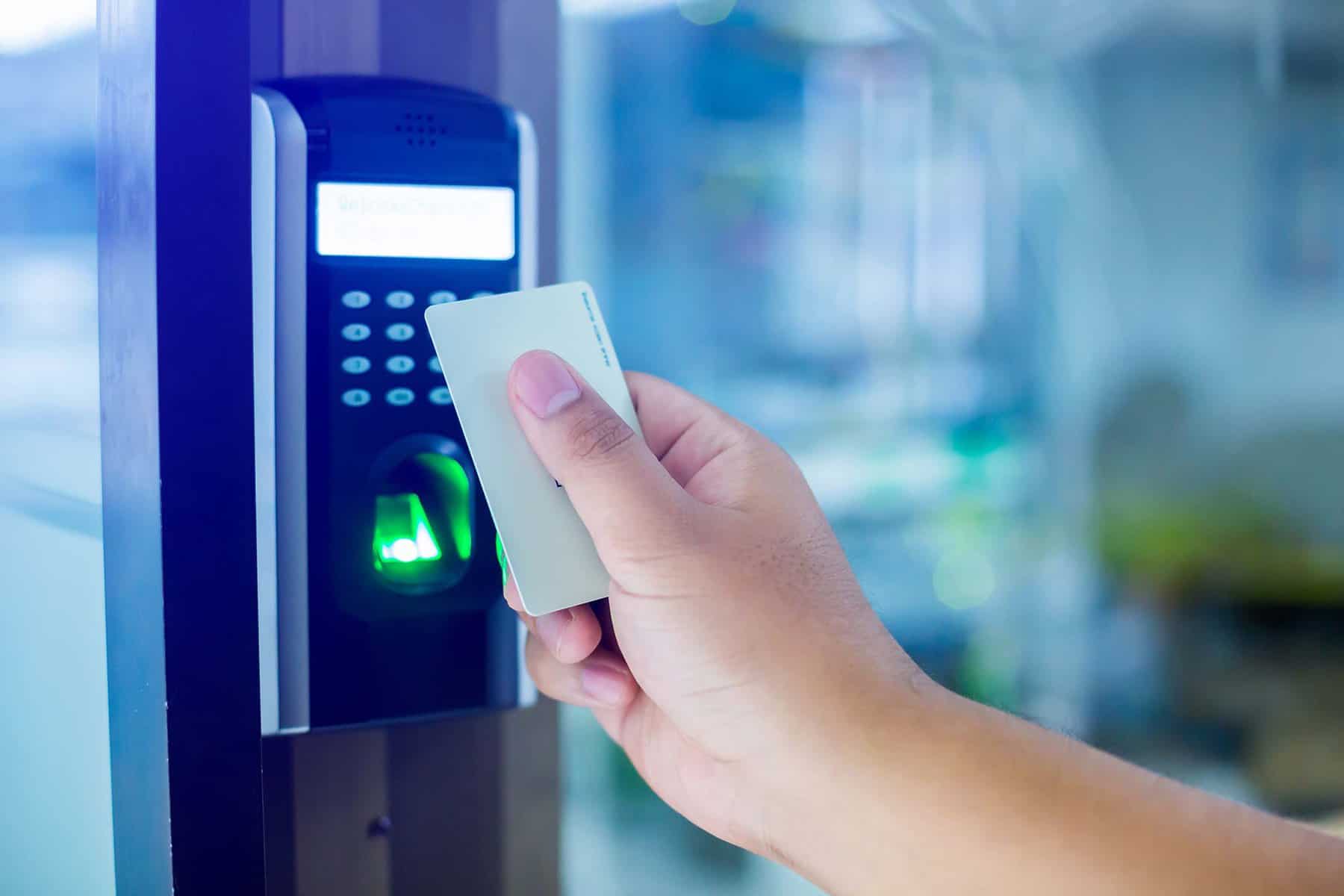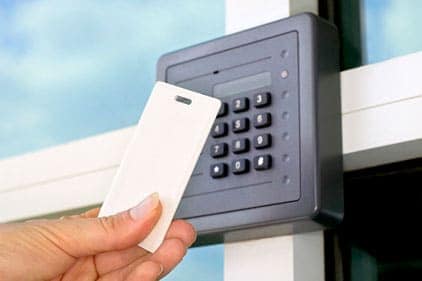Protecting Your Business With Physical Access Control Systems

A Physical Access Control System Helps Protect Your Operation
For most businesses, the presence of a lock and key on a door signifies the most basic form of a physical access control system or PACS. It allows some people access and prevents access for other people. In modern times, a physical access control system is part of a larger security system and runs a part of an organization’s information technology network. A basic PACS verifies a person’s identity upon entering a building or area, such as with an RFID card. The most sophisticated systems use multiple methods of verification before granting the person access. It’s also important to distinguish between a PACS and a logical access control system, such as a server with sensitive data that is password protected.
PACS Vs. Entrance Control
Commonly, a PACS will include an entrance control mechanism, but they can be separate systems. The PACS is designed to verify someone’s identity, permissions, and status, using that information to signal the entrance control system to perform its job. The entrance control system is the mechanical means used to prevent access, such as a locking door latch or a turnstile. These systems work together in the event of a breach, trigger the security alarm and locking down access to sensitive areas.
PACS Vs. Visitor Management
Similarly, visitor management is a system that depends on a PACS in order to maintain security, but it isn’t the PACS itself. Most organizations use visitor management to control the flow of humans who don’t have sustained permission to access the building. You log the visitor in on a sign-in sheet or database and provide them with temporary credentials, such as a visitor badge.
PACS Have Several Key Components
An effective PACS relies on a number of sub-systems and infrastructure to operate:
Access Point

This is the doorway, threshold or gateway where each person verifies their identity and is granted or rejected access. The first access point that people arrive at is the most important. All other access points should be subordinate to the first.
PIV Credential
A personal identity verification (PIV) credential can be several things: it can be something a person knows (such as a password), something a person has (such as an ID card), something they are (such as a fingerprint).
Credential Reader
The credential reader is the electronics device or human who verifies the person’s identity and PIV credentials. This is most often an RFID scanner for electronic ID cards.
Biometric Reader
A biometric reader examines a biological marker such as a fingerprint or iris scan and tries to match it to the database to verify the identity of the person presenting the marker.
Control Panel
The control panel is where you modify and control the PACS. There may be one control panel that corresponds to each access point, as well as a central control panel to tie all the different access points together.
Access Control Server
Every PACS needs an access control server to hold the database of authorized and unauthorized people. It may live in the cloud, but it must allow every access point to verify a person’s identity and log their status for visibility to the entire system.
Physical Access Control Systems Best Practices
Determining what kind of PACS you need starts with asking yourself a few questions:
What needs to be protected?
You may have a building with varying levels of access for different areas. This is the beauty of a modern PACS, which can accommodate different access levels at different doors. However, you need to evaluate your organization as a whole and determine which areas need the most protection and the least protection. Then you can install access points at the right spots to keep your most valuable assets or dangerous equipment away from the wrong people.
Security vs. Convenience
Often the more security or access control you add to a system, the slower and more difficult it is for people to use. This can be seen as an impediment to success or an opportunity to protect the organization. It’s important to consider what the “right” level of security and controlled access is, rather than erring on the side of “more security is better.”
Professional Installation Is A Must
Due to the fact that a PACS is a blend of physical infrastructure, hardware, and software solutions, you should consult with an experienced partner who can ensure your system ties in properly with the larger IT network and provides the degree of security that matches your organization’s needs.
About i.e.Smart Systems
i.e.Smart Systems is a Houston, TX based technology integration partner that specializes in design and installation of audio/visual technology and structured cabling. For more than three decades, our team of in-house experts has partnered with business owners, architectural firms, general contractors, construction managers, real estate developers, and designers in the Houston market, to deliver reliable, scalable solutions that align with their unique goals.




